You can listen to Hoosier History Live! live on the air each Saturday, or listen online at the WICR website during the broadcast. We invite you to visit our website!
March 5 show
Donald Davidson on the Speedway's 100 years
 Because we're in what's being called the "centennial era" of the Indianapolis Motor Speedway - a celebration that began in 2009 to mark the 100th year of the opening of the world-famous racetrack and will continue through May with the 100th anniversary of the inaugural Indianapolis 500 in 1911 - it's not jumping the gun, or green flag, to roar into track history.
Because we're in what's being called the "centennial era" of the Indianapolis Motor Speedway - a celebration that began in 2009 to mark the 100th year of the opening of the world-famous racetrack and will continue through May with the 100th anniversary of the inaugural Indianapolis 500 in 1911 - it's not jumping the gun, or green flag, to roar into track history.
Our guest should draw cheers from Hoosier History Live! listeners who have been clamoring for him to visit us during the centennial era. Speedway historian extraordinaire Donald Davidson, who enjoys international fame for his encyclopedic knowledge of all aspects of the Indy 500, will join Nelson in studio. 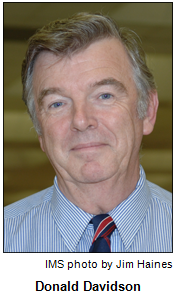 A native of England who became obsessed with the Speedway as a boy overseas, Donald showed up at the track in 1964 and instantly wowed Hoosiers with the depth of his 500-Mile Race trivia. Having Donald Davidson in our studio will be the ideal opportunity for listeners to call in and ask their most burning questions about racing folklore and fact.
A native of England who became obsessed with the Speedway as a boy overseas, Donald showed up at the track in 1964 and instantly wowed Hoosiers with the depth of his 500-Mile Race trivia. Having Donald Davidson in our studio will be the ideal opportunity for listeners to call in and ask their most burning questions about racing folklore and fact.
Expect Donald and Nelson to share insights about their mutual friend, Tom Carnegie, the legendary "Voice of the Speedway," who died Feb. 11. During a memorial service for Carnegie, the track announcer since 1946, Donald said that with his booming voice and enthusiasm, "no single individual" had a greater impact on the growth of qualifications every May at the Speedway.
Of course, Donald Davidson, the author of the Autocourse Official History of the Indianapolis 500 (CMG Publishing, 2006), has had an enormous impact as well. His legions of fans even have created a Facebook page: It's called the Donald Davidson Appreciation Society. Inducted last year into the Auto Racing Hall of Fame, Donald has hosted radio programs on various stations for more than 40 years, including "Talk of Gasoline Alley."
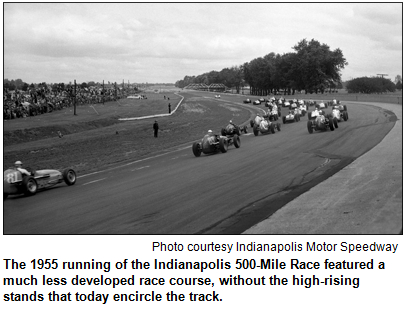 On our show, Donald will separate fact from myth about the controversial inaugural race in 1911 won by Ray Harroun in an Indianapolis-made Marmon Wasp.
On our show, Donald will separate fact from myth about the controversial inaugural race in 1911 won by Ray Harroun in an Indianapolis-made Marmon Wasp.
Fun facts: Despite various controversies, the race was declared a spectacular success, with the crowd estimated at 80,000; officials at Union Station in downtown Indy announced it was the busiest day in the history of the railroad terminal.
By the way, Harroun's average speed during the historic race was 74.6 mph. It took his Marmon Wasp 6 hours and 42 minutes to complete the 500-mile journey, and that careens into a seldom-discussed issue Nelson intends to explore with Donald during the show: The unheralded but crucial role of relief drivers in the early Indianapolis 500s. Because even the best drivers needed breaks over such a prolonged period in excessive heat and other discomforts, they usually employed relief drivers who spelled them at the wheel.
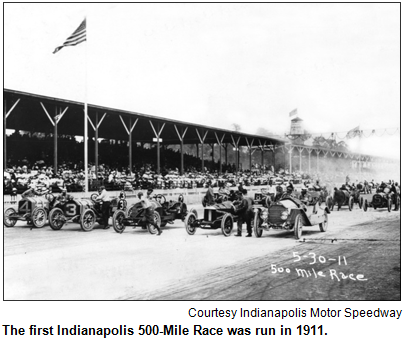 According to a newspaper column Donald wrote in 1989 about the folks he called "unsung heroes," a fellow named Cyrus Patschke drove about 40 laps for Harroun during the 1911 race. The relief drivers received some pay, but almost never credit. (However, Donald noted even the unknown Cyrus Patschke had groupies who belatedly recognized his efforts. During the 1970s, he recalled, a Volkswagen bus used to show up on race day with a banner proclaiming its occupants as members of the "Cyrus Patschke Fan Club.") Were these relief drivers factory workers, engineers and other local folks who just wanted to pitch in and help the drivers? Did any of them resent their anonymity? Nelson expects to ask these questions of our Speedway history guru.
According to a newspaper column Donald wrote in 1989 about the folks he called "unsung heroes," a fellow named Cyrus Patschke drove about 40 laps for Harroun during the 1911 race. The relief drivers received some pay, but almost never credit. (However, Donald noted even the unknown Cyrus Patschke had groupies who belatedly recognized his efforts. During the 1970s, he recalled, a Volkswagen bus used to show up on race day with a banner proclaiming its occupants as members of the "Cyrus Patschke Fan Club.") Were these relief drivers factory workers, engineers and other local folks who just wanted to pitch in and help the drivers? Did any of them resent their anonymity? Nelson expects to ask these questions of our Speedway history guru.
Even casual fans of "the 500" won't want to miss this show.
Roadtripper
Our Roadtripper, Chris Gahl of the ICVA, will call in with a surprise entry for you to visit in the coming days.
History Mystery question
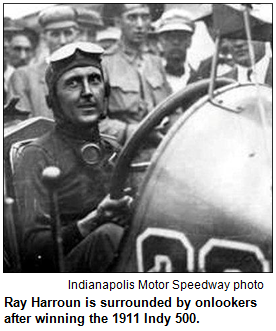 According to Donald Davidson's book Autocourse Official History of the Indianapolis 500, Ray Harroun, the winner of the inaugural 500-Mile Race in 1911, always regarded himself as more of an engineer and an inventor than a race-car driver. In fact, he has been credited with being the first person to use a certain device or feature on a car because he installed one on the Marmon Wasp that he drove to victory in the first 500. This device or implement is a crucial aspect on automobiles to this day.
According to Donald Davidson's book Autocourse Official History of the Indianapolis 500, Ray Harroun, the winner of the inaugural 500-Mile Race in 1911, always regarded himself as more of an engineer and an inventor than a race-car driver. In fact, he has been credited with being the first person to use a certain device or feature on a car because he installed one on the Marmon Wasp that he drove to victory in the first 500. This device or implement is a crucial aspect on automobiles to this day.
Question: Name the device that Ray Harroun may have introduced on cars.
To win the prize, you must call in with the correct answer during the live show. The call-in number is (317) 788-3314, and please do not call until you hear Nelson pose the question on the air. Please do not call if you have won a prize from any WICR show during the last two months. You may wish to email the answer, but that doesn't "count"; nor can we respond, because we can't give out the correct answer before the live show. We don't want to be caught up in something like those 1950s television quiz show scandals - speaking of history! The prize is an Indy 500 Prize Pack, courtesy of the Indianapolis Motor Speedway.
Your Hoosier History Live! team,
Nelson Price, host and creative director
Molly Head, producer, (317) 927-9101
Chris Gahl, Roadtripper
Richard Sullivan, webmaster and tech director
Pam Fraizer, graphic designer
Garry Chilluffo, creative consultant
www.hoosierhistorylive.org






Please tell our sponsors that you appreciate their support: Avant Garb, Coby Palmer Designs, Indiana Historical Society, Indianapolis Motor Speedway, Lucas Oil and Story Inn.
 Acknowledgments to Print Resources, Indianapolis Marion County Public Library, Monomedia, Indiana Humanities Council, Indianapolis Convention & Visitors Association, WICR-FM, Fraizer Designs, Chelsea Niccum and many other individuals and organizations. We are an independently produced program and are self-supporting through organizational sponsorships, grants and through individual tax-deductible contributions through the Indiana Humanities Council. Visit our website to learn how you can support us financially.
Acknowledgments to Print Resources, Indianapolis Marion County Public Library, Monomedia, Indiana Humanities Council, Indianapolis Convention & Visitors Association, WICR-FM, Fraizer Designs, Chelsea Niccum and many other individuals and organizations. We are an independently produced program and are self-supporting through organizational sponsorships, grants and through individual tax-deductible contributions through the Indiana Humanities Council. Visit our website to learn how you can support us financially.
March 12 show
Population shifts across Indiana
 "State's fastest growing counties were in Indy metro area" was the headline on a recent Indianapolis Star story about the newly released U.S. Census Bureau results from 2010. Other news accounts reported shifts in Indiana's racial and ethnic makeup.
"State's fastest growing counties were in Indy metro area" was the headline on a recent Indianapolis Star story about the newly released U.S. Census Bureau results from 2010. Other news accounts reported shifts in Indiana's racial and ethnic makeup.
Hoosier History Live! will put the results in historic context - and explore population declines in such cities as Gary, South Bend, Evansville and Hammond - when Nelson is joined in studio by an Indiana University demographer quoted in many of these accounts about the state's population shifts. He is Matt Kinghorn, an analyst with the Indiana Business Research Center at IU's Kelley School of Business.
With Matt as our guide, we will explore Indiana's overall population increase; it's up 6.6 percent from 10 years prior, a growth rate that topped those of neighboring Illinois (3.3 percent) and Ohio (1.6 percent); Michigan's population actually dropped, declining by .6 percent.
Although Matt points out that Indiana still remains less diverse than the nation, the population of Hispanics in the Hoosier state grew 82 percent. (In Illinois, Hispanics have become the largest minority group, exceeding blacks, according to an account in USA Today.)
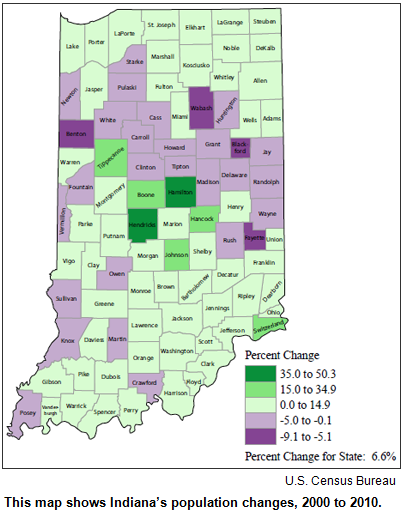 Overall, nearly 60 percent of the growth in Indiana came in Indianapolis (Marion County) and surrounding counties; the population of Carmel and Fishers has more than doubled since 2000. That may not be startling, but perhaps it's a bit surprising that only two of the state's largest cities, Indy and Fort Wayne, gained people. The largest decrease (22 percent) was in Gary, with South Bend and Evansville chalking up 6.1 and 3.4 percent losses, respectively.
Overall, nearly 60 percent of the growth in Indiana came in Indianapolis (Marion County) and surrounding counties; the population of Carmel and Fishers has more than doubled since 2000. That may not be startling, but perhaps it's a bit surprising that only two of the state's largest cities, Indy and Fort Wayne, gained people. The largest decrease (22 percent) was in Gary, with South Bend and Evansville chalking up 6.1 and 3.4 percent losses, respectively.
As part of our effort to put the results in historic context, Matt and Nelson will explain how, despite Indiana's reputation as an agricultural state, by far the majority of residents have not lived on farms or in small towns for many generations. The latest census results reinforce the longstanding trend of urban and suburban living.
Some other results of the new data: Suburban communities and counties reported noticeable increases in black residents. And third-place in terms of growth among the most sizable cities, after Carmel and Fishers, was Noblesville.
Matt Kinghorn, our guest, has served as one of Indiana's representatives to the Census Bureau's Federal-State Cooperative for Population Estimates; he also is a member of the Indiana Geographic Information Council. His work includes population projections for Indiana - so, in this case, our history show probably will be taking a future peek as well. Our guest also recommends a look at this interactive map from the Census Bureau.
© 2011 Hoosier History Live! All rights reserved.